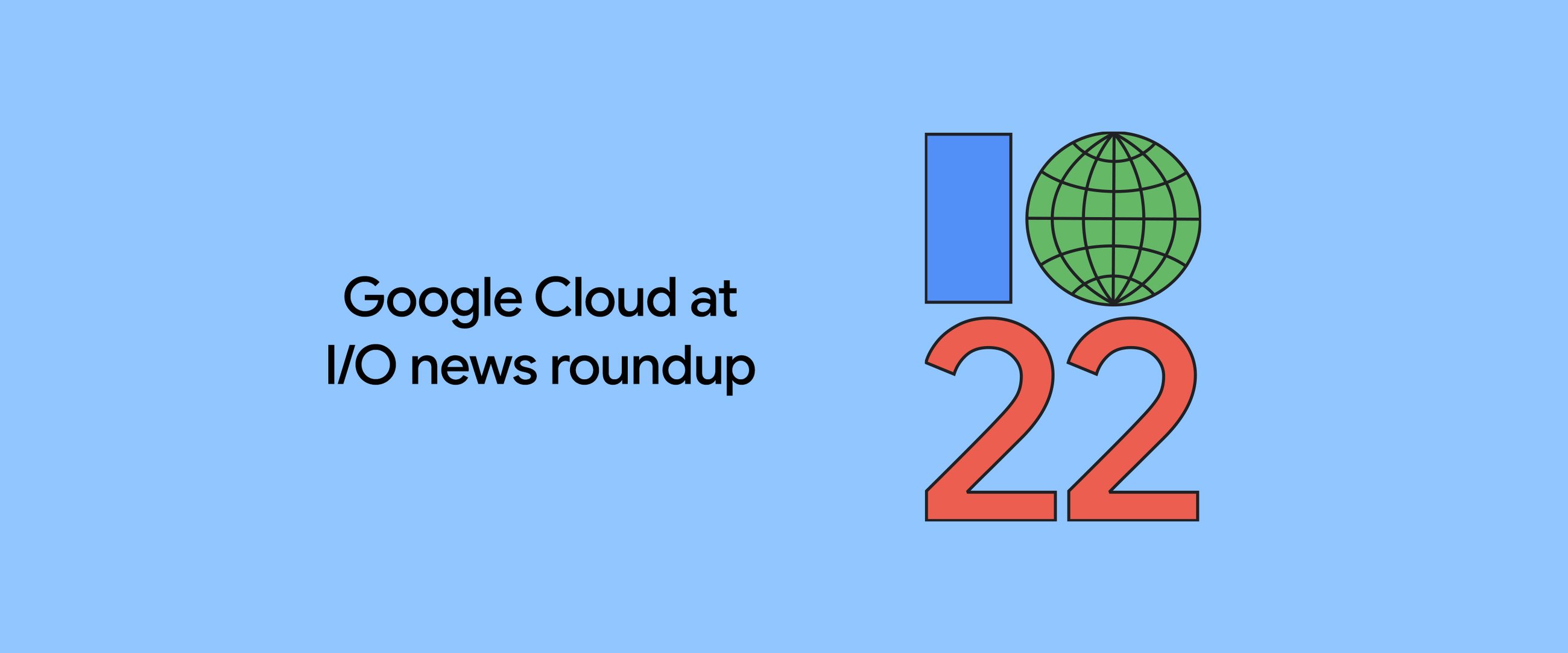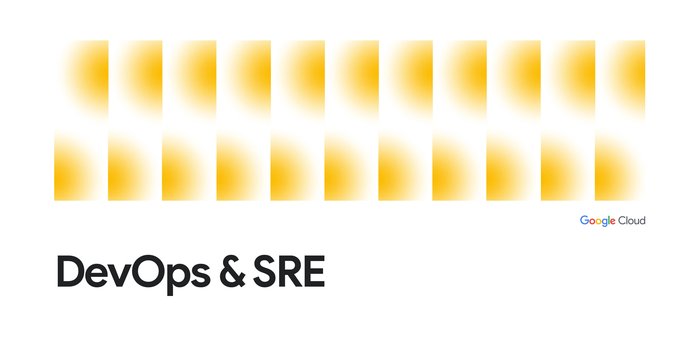Google Cloud at I/O: Everything you need to know

Jeana Jorgensen
Senior Director, Google Cloud Product Marketing
Nikhil Kaul
Head of Product Marketing
We love this time of year. This week is Google I/O, our largest developer conference, where developer communities from around the world come together to learn, catch up, and have fun. Google Cloud and Google Workspace had a big presence at the show, talking about our commitment to building intuitive and helpful developer experiences to help you innovate freely and quickly. We do the heavy lifting, embedding the expertise from years of Google research in areas like AI/ML and security, so you can easily build secure and intelligent solutions for your customers.
So, what’s happening at I/O this year?
Let’s start with the keynotes…
Google I/O keynote
Google and Alphabet CEO Sundar Pichai kicked off Day 1 of I/O with a powerhouse keynote highlighting recent breakthroughs in machine learning, including one of the fastest, most efficient, and most sustainable ML infrastructure hubs in the world. Google Cloud's machine learning cluster with Cloud TPU v4 pods (in Preview), allows researchers and developers to make AI breakthroughs by training larger and more complex models faster, to power workloads like large-scale natural language processing (NLP), recommendation systems, and computer vision. With eight TPU v4 pods in a single data center, generating 9 exaflops of peak performance, we believe this system is the world's largest publicly available ML hub in terms of cumulative computing power, while operating at 90% carbon-free energy. Read more about the ML hub with Cloud TPU v4 here.
“Early access to TPU v4 has enabled us to achieve breakthroughs in conversational AI programming with our CodeGen, a 16-billion parameter auto-regressive language model that turns simple English prompts into executable code.” —Erik Nijkamp, Research Scientist, Salesforce
“…we saw a 70% improvement in training time for our ‘extremely large’ model when moving from TPU v3 to TPU v4... The exceptionally low carbon footprint of Cloud TPU v4 Pods was another key factor.…”—Aidan Gomez, CEO and Co-Founder, Cohere
In the keynote, Sundar also announced new AI-enabled features in Google Workspace focused on users, that are designed to help people thrive in the hybrid workplace. New advancements in NLP enable summaries in Spaces to help users catch up on missed conversations by providing a helpful digest. Automated meeting transcription for Google Meet allows users who didn’t attend a meeting to stay in the loop, or for attendees to easily reference the discussion at a later time. Users can also now leverage portrait restore, which automatically improves video image quality — even on devices with lower quality webcams. And they can filter out the reverberation in large spaces with hard surfaces, giving users “conference-room-quality” audio whether they are in their basement, kitchen, or garage. These new features deliver high quality experiences, allowing Google Workspace users to benefit from our AI leadership.
Developer keynote
Next up, we heard from Jeanine Banks, Google Vice President of Developer Experiences and DevRel, and a number of product teams who led us through a flurry of exciting new updates about everything from Android to Flutter to Cloud. On the Google Cloud front, we announced the preview of Cloud Run jobs, which can reduce the time developers spend performing administrative tasks such as database migration, managing scheduled jobs like nightly reports, or doing batch data transformation. With Cloud Run jobs, you can execute your code on the highly scalable, fully managed Cloud Run platform, but only pay when your jobs are executing — and without having to worry about managing infrastructure. Learn more about Cloud Run jobs here.
Then, we announced the preview of AlloyDB for PostgreSQL, a new fully managed, relational database service that gives enterprises the performance, availability, and ease of management they need to migrate from their expensive legacy database systems and onto Google Cloud. AlloyDB combines proven, disaggregated storage and compute that powers our most popular, globally available products such as Google Maps, YouTube, Search, and Ads — with PostgreSQL, an open source database engine beloved by developers.
Our performance tests show that AlloyDB is four times faster for transaction processing and up to 100 times faster for analytical queries than standard PostgreSQL. It’s also two times faster than AWS’ comparable PostgreSQL-compatible service for transactional workloads. AlloyDB’s fully-managed database operations and ML-based management systems can relieve administrators and developers from daunting database management tasks. Of course, AlloyDB is fully PostgreSQL-compatible, meaning that developers can reuse their existing development skills and tools. It also offers an impressive 99.99% SLA inclusive of maintenance, and no complex licensing or I/O charges. You can learn more about AlloyDB for PostgreSQL here.
“Developers have many choices for building, innovating and migrating their applications. AlloyDB provides us with a compelling relational database option with full PostgreSQL compatibility, great performance, availability, and cloud integration. We are really excited to co-innovate with Google and can now benefit from enterprise grade features while cost-effectively modernizing from legacy, proprietary databases."—Bala Natarajan, Sr. Director, Data Infrastructure and Cloud Engineering at PayPal
Cloud keynote - “The cloud built for developers”
Moving on to the Cloud keynote, Google Cloud’s very own Aparna Sinha, Director of Product Management, Google Cloud and Google Workspace’s Matthew Izatt, Product Lead, gave the I/O audience exciting cloud updates. Aparna reiterated the benefits of Cloud Run jobs and AlloyDB, while showcasing how our services integrate nicely to give you a full stack specifically tailored for backend, web, mobile and data analytics applications. These stacks also natively embed key security and AI/ML features for simplicity.
Specifically, with build integrity, a new feature in Cloud Build, you get out-of-the-box build provenance and “Built by Cloud Build” attestations, including details like the images generated, the input sources, the build arguments, and the built time, helping you achieve up to SLSA Level 2 assurance. Next, you can use Binary Authorization to help ensure that only verified builds with the right attestations are deployed to production. You can get the same results as the experts — without having to be a security expert yourself.
Aparna also announced the preview of Network Analyzer, showing how developers can troubleshoot and isolate root causes of complex service disruptions quickly and easily. The new Network Analyzer module in Network Intelligence Center can proactively detect network failures to prevent downtime caused by accidental misconfiguration, over-utilization, and suboptimal routes. Network Analyzer is available for services like Compute Engine, Google Kubernetes Engine (GKE), Cloud SQL, and more. You can visit the Network Analyzer page to learn more.
Something that really got the developer audience excited was the announcement of the preview of Immersive Stream for XR allowing you to render eXtended Reality experiences using powerful Google Cloud GPUs, and stream these experiences to mobile devices around the world. Immersive Stream for XR integrates the process of creating, maintaining, and scaling high-quality XR. In fact, XR content delivered using Immersive Stream for XR works on nearly every mobile device regardless of model, year, or operating system. Also, your users can enjoy these immersive experiences simply by clicking a link or scanning a QR code.
“We know that our new and existing customers expect unique and innovative campaigns for two of the most unique and innovative vehicles in our brand’s history, and Google Cloud helped us create something very special to share with them.”—Albi Pagenstert, Head of Brand Communications and Strategy, BMW of North America
To learn more, visit xr.withgoogle.com, and check out this video to see for yourself!
And finally, Matthew brought it all home, highlighting the incredible innovation coming from Google Workspace. He detailed how we are making it easier for developers to extend and customize the suite, and simplify integration with existing tools. For example, Google Workspace Add-ons allow you to build applications using your preferred stack and languages; you just build once, and your application is available to use across Google Workspace apps such as Gmail, Google Calendar, Drive and Docs. Matthew also shared how we are improving the development experience by allowing you to easily connect DevOps tools like PagerDuty to the Google Workspace platform. Finally, he noted the critical role that Google Workspace Marketplace can play in increasing the growth and engagement of your application. If you’re interested in learning about how we’re using machine learning to help make people’s work day more productive and impactful, here’s where you can find all of this week’s Workspace news.
Sessions and workshops
Whew… that was a lot of cloud updates in three keynotes! But wait… there’s more!
Google Cloud also had 14 cloud breakout sessions and 5 workshops at I/O, covering loads of different topics. Here’s the full list for you, all available on demand:
Sessions
Asynchronous operations in your UI using Workflows and Firestore
Auto alerts for Firebase users with Functions, Logging, and BigQuery
Extending Google Workspace with AppSheet’s no-code platform and Apps Script
Fraudfinder: A comprehensive solution for real data science problems
Learn to refactor Cloud applications in Go 1.18 with Generics
Workshops
Apply responsible AI principles when building remote sensing datasets
Build an event-driven orchestration with Eventarc and Workflows
And finally, what would I/O be without some massively fun interactive experiences? Take our cloud island at I/O Adventure featuring custom interactive demos and sandboxes. Here, attendees can explore content, chat with Googlers, and earn some really cool swag.
So that’s a wrap on Google Cloud announcements at I/O. We’ll have lots more exciting announcements in the next few months that will make your developer experience even simpler and more intuitive. In the meantime, join our developer community, Google Cloud Innovators, where you’ll make lots of awesome new friends. And be sure to register for Google Cloud Next '22 in October. We can’t wait to see you again!



